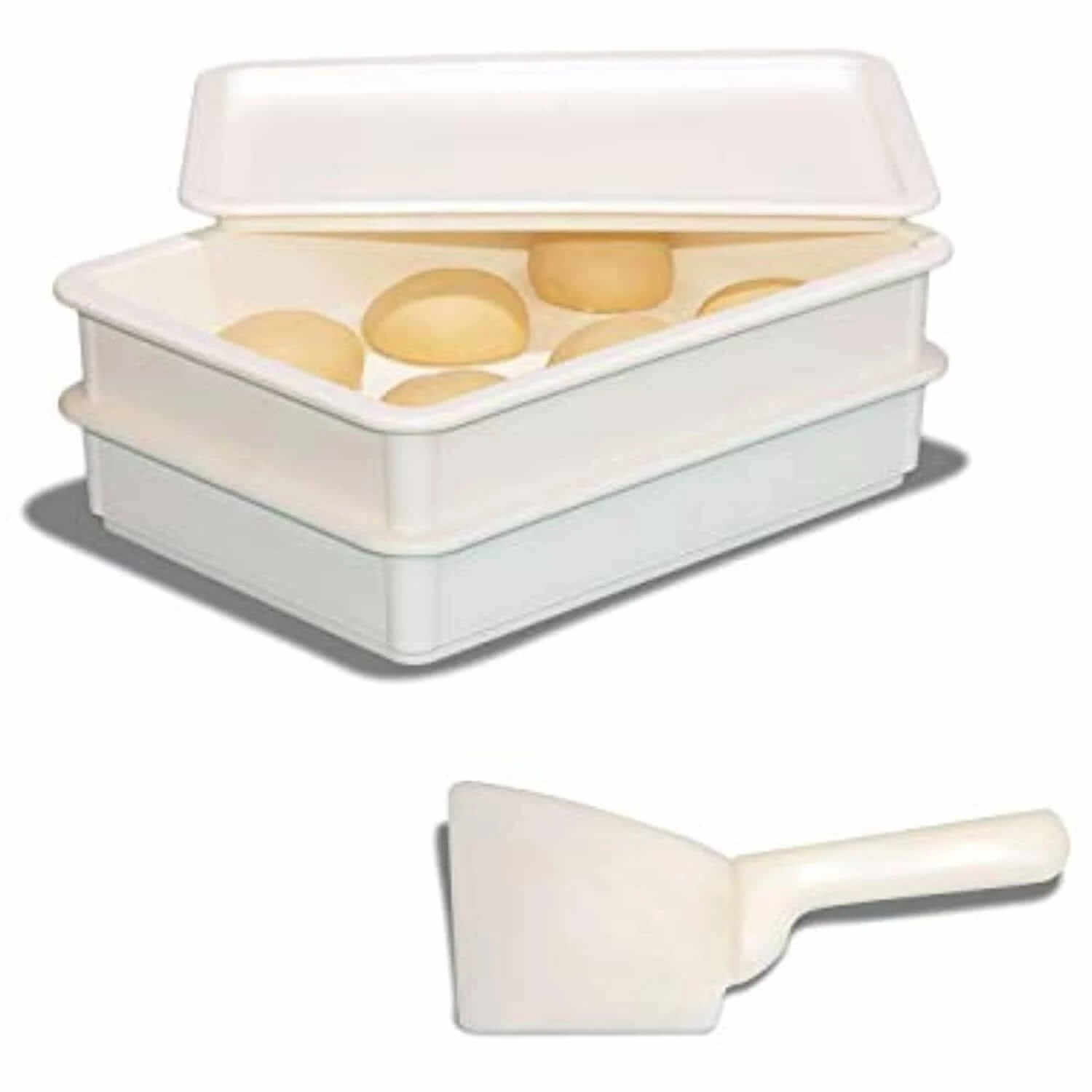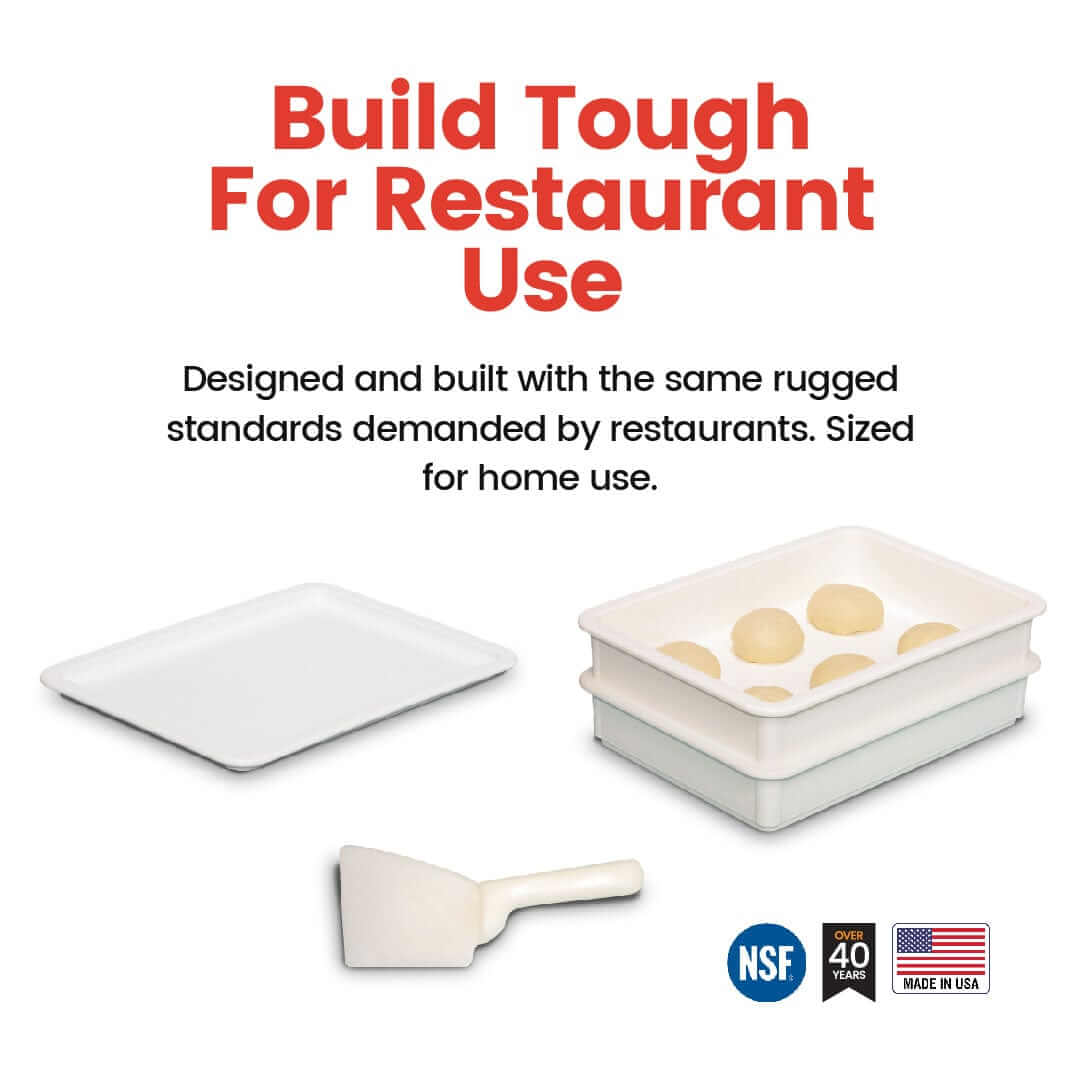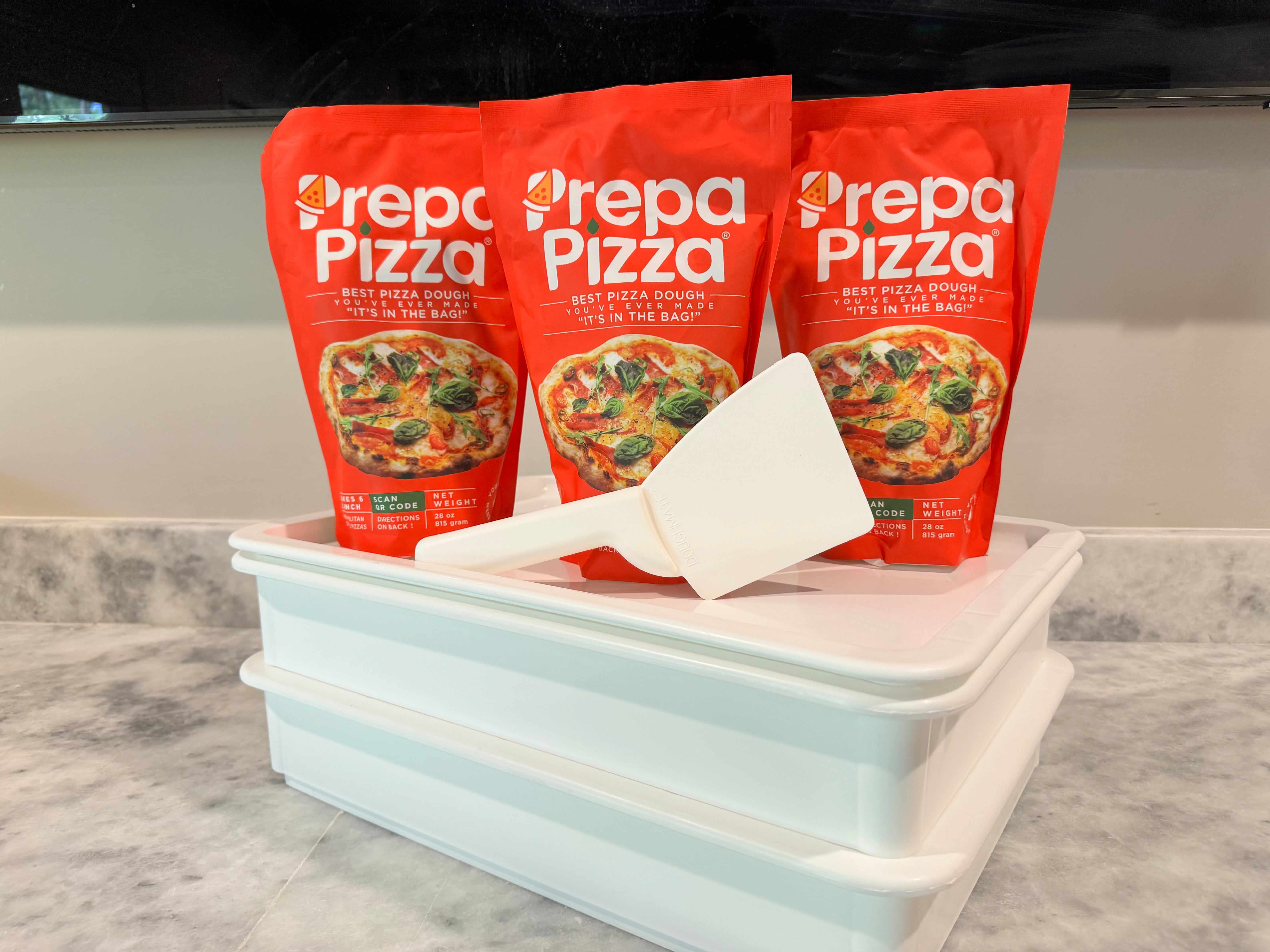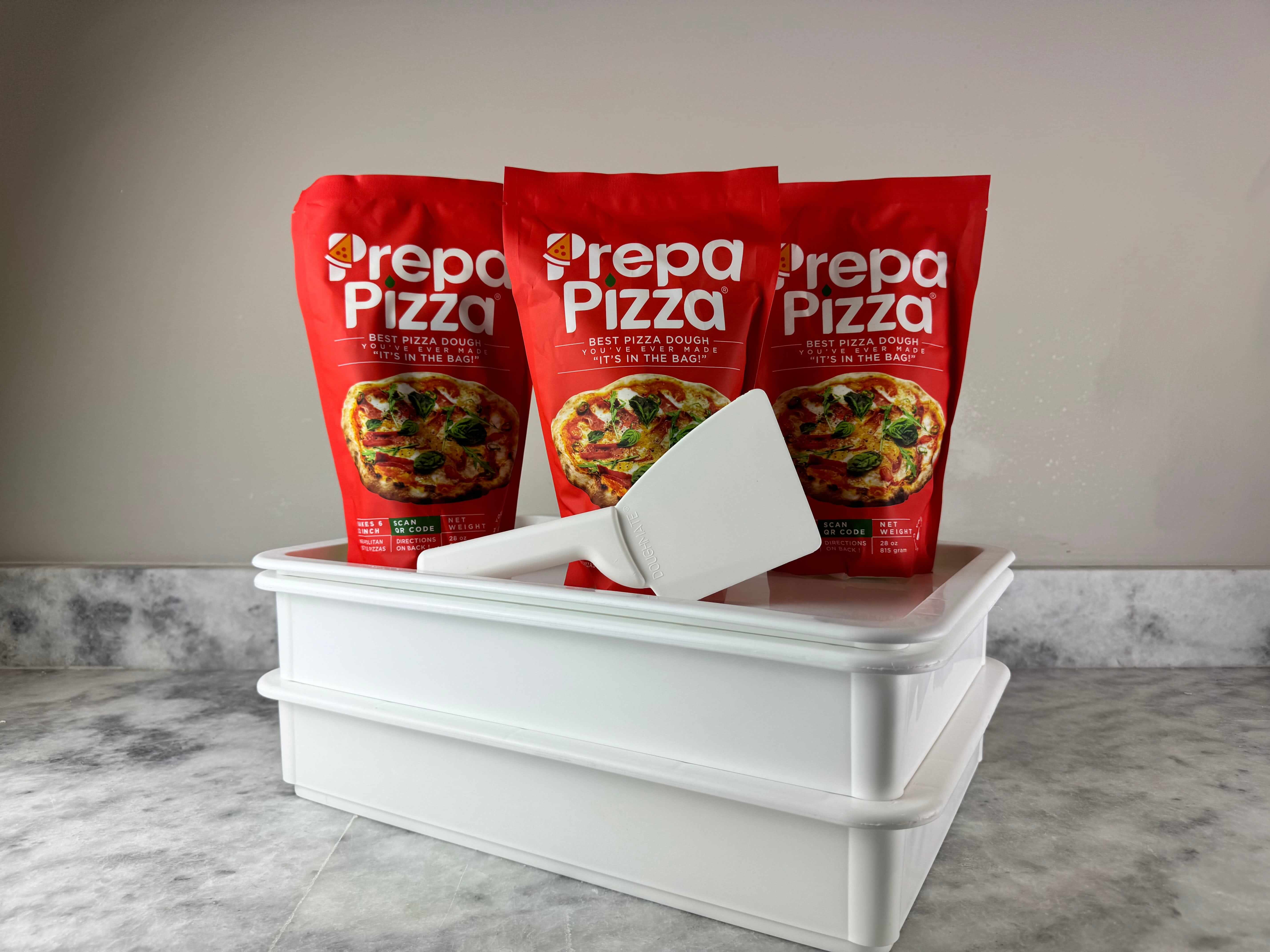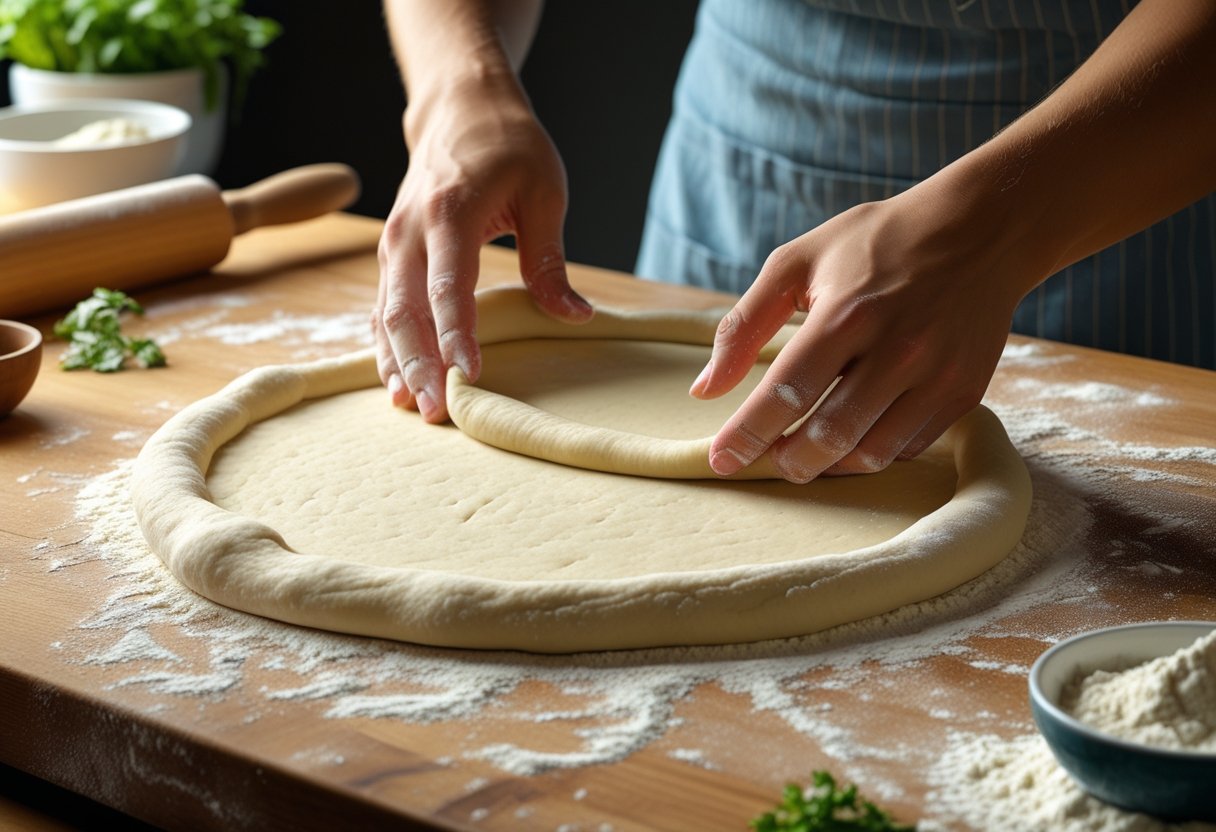
Pizza Base Shaping: Essential Techniques for Perfectly Formed Crusts
Shaping a pizza base can be both an art and a science, especially when you aim for that perfect crust. With the right techniques, you can turn your pizza dough into a beautifully shaped base that enhances both texture and flavor. Using Prepa Pizza's premade dough makes this process even easier, allowing you to focus more on crafting your pizza masterpiece rather than worrying about the dough preparation. Check out our Prepa Pizza Dough Kit for a quality start.
When shaping your pizza base, the key is to be gentle yet deliberate. You want to stretch the dough evenly to create a uniform thickness without tearing it. Hand-shaping rather than using a rolling pin preserves the texture and keeps the edges puffy, ensuring that every bite delivers a satisfying crunch.
Getting the shape right is crucial for the overall pizza experience. From classic rounds to artisanal shapes, mastering how you handle your dough can elevate your homemade pizzas to a restaurant-quality level. With a few simple techniques and the convenience of Prepa Pizza dough, you can achieve pizza bases that impress family and friends alike.
Foundations of Pizza Base Shaping
Creating a fantastic pizza base starts with an understanding of the dough's composition and structure. Key elements like gluten development and fermentation play critical roles in achieving the perfect texture and flavor. Let’s explore these essential concepts.
Understanding Pizza Dough
Pizza dough is the foundation of your homemade pizza experience. It typically consists of flour, water, salt, and yeast. When you use Prepa Pizza's premade dough, you can skip some of the more intricate steps in making dough from scratch, saving time while maintaining quality.
The type of flour you choose affects the final product. High-protein flours, such as bread flour, produce a stronger dough that can hold its shape and improve texture. Hydration levels also affect elasticity and crispiness, making it crucial to adjust based on your preferred style of pizza.
Role of Gluten in Dough Structure
Gluten is a key protein found in wheat flour that develops when you knead the dough. It provides the necessary structure that allows your pizza to rise and maintain its shape. When shaping your dough, you want to encourage proper gluten development without over-kneading, which can make the crust tough.
With Prepa Pizza's dough, gluten is already well-developed, allowing you to focus on shaping and stretching the dough perfectly. Remember to let the dough rest, as this relaxation makes it easier to work with, enhancing your shaping experience.
Importance of Fermentation
Fermentation is crucial for flavor development in pizza dough. As yeast ferments, it produces carbon dioxide, which helps the dough rise. This process not only contributes to the texture but also adds depth to the flavor.
A longer fermentation allows for more complex flavors to develop. With Prepa Pizza's premade dough, you'll benefit from a fermentation process that enhances taste without extra effort on your part. This means you can enjoy a restaurant-quality pizza at home, with the flavors achieved through careful fermentation.
Preparation Before Shaping
Before you start shaping your pizza base, it’s essential to create the right conditions. Preparing your work surface, kneading the dough effectively, and allowing it to rest properly are crucial steps that impact the final outcome of your pizza creation. Using quality ingredients, such as Prepa Pizza's premade dough, sets you up for success.
Selecting and Preparing Your Work Surface
Your work surface is vital for successful pizza shaping. Opt for a clean, flat surface like a countertop or a wooden board. Dust it with flour to prevent sticking, ensuring the dough glides smoothly.
Consider using a pizza peel for transfer to the oven. Sprinkle a mixture of flour and cornmeal on it to provide a non-stick base. This helps prevent the dough from adhering, which can ruin your pizza's shape.
Kneading Techniques for Even Texture
Kneading is essential for developing the gluten network in your pizza dough. Start by pressing down with the heel of your hand, then fold the dough over itself and repeat. This process should last around 8-10 minutes, developing elasticity.
Ensure you achieve a smooth, slightly tacky feel without adding excessive flour. Too much flour can hinder dough expansion, which is crucial for a light, airy crust.
If using Prepa Pizza's premade dough, kneading time is minimal, allowing you to focus on shaping right away.
Resting and Proofing the Dough
Resting and proofing are crucial stages for pizza dough preparation. Allow your dough to rest for at least 30 minutes after kneading. This lets the gluten relax, making it easier to shape.
If you have the time, consider a longer proof. A slow rise in the refrigerator enhances flavor and texture. It’s beneficial to cover the dough with a damp cloth or plastic wrap to prevent it from drying out.
For best results, ensure the dough doubles in size during proofing. This ensures a light, airy crust once baked, making your pizza truly enjoyable.
Shaping Methods for Pizza Bases
Shaping pizza dough effectively is essential to achieving your desired pizza crust. Whether you prefer a thick crust or a thin crust, the right techniques can enhance your homemade pizza experience. Using Prepa Pizza's premade dough can simplify this process, allowing for consistent results in your kitchen. You can find their high-quality dough here.
Hand-Stretching Pizza Dough
Hand-stretching is a classic technique that offers great control over your dough. Start with a ball of Prepa Pizza dough that has rested for at least 30 minutes to maximize elasticity.
Begin by pressing the dough in the center with your fingertips, gently working outward.
Rotate the dough as you stretch to ensure even thickness. Pay attention to the edges, which should be slightly thicker for a nice crust.
This technique is especially effective for achieving that authentic Neapolitan-style pizza look and feel.
Rolling Techniques for Even Thickness
Using a rolling pin can help you achieve a uniform thickness across your pizza base. First, lightly flour your work surface and the rolling pin to prevent sticking. Start by flattening the dough into a small disc.
Gradually roll it out from the center to the edges, applying even pressure.
If you wish for a thicker crust, leave the edges slightly thicker while rolling. Move the dough frequently to ensure it doesn’t stick. This method promotes even thickness and is ideal for shapes other than traditional rounds.
Forming Different Pizza Crusts
You can create various types of pizza crusts with just a few adjustments in shaping methods. For a thick crust, use more dough and stretch it less, keeping a more compact shape. Conversely, for a thin crust, start with less dough and stretch it out more.
You might also consider using your fingers to pinch and shape the dough into a specific design.
Experiment with different shapes, such as square or rectangular, to enjoy unique presentation styles.
Using Prepa Pizza dough makes it easier to explore these variations without compromising quality.
Ensuring a Consistent Shape
Consistency in shape not only enhances the presentation but also affects cooking time and texture. To achieve uniform shapes, use a scale to measure portions of dough, aiming for the same weight for each pizza.
When stretching or rolling your dough, regularly check for uniform thickness by lifting it to eye level.
Maintain the circular shape by rotating the dough continually as you work.
This attention to detail will lead to evenly cooked pizza bases, ensuring a delightful eating experience.
Tools and Surfaces for Perfect Shaping
To achieve the best pizza base, you need the right tools and surfaces. Each component plays a vital role in ensuring your dough is shaped effectively and retains its integrity. With Prepa Pizza's premium premade dough, you can focus more on mastering the shaping technique without worrying about the dough quality.
Using a Pizza Peel, Stone, and Baking Tray
A pizza peel is essential for transferring your shaped dough to and from the oven. Look for a peel made of wood or metal, which provides a smooth surface for sliding pizzas onto a hot baking stone. A pizza stone retains heat efficiently, helping to create a crispy crust.
Using a baking tray can also work, especially for beginners. Line the tray with parchment paper to prevent sticking. Ensure your dough is shaped evenly to fit the surface. Regardless of your choice, preheat these surfaces to enhance heat distribution and achieve that ideal crust texture.
Working with Parchment Paper and Olive Oil
Parchment paper is a valuable ally when shaping pizza. It allows you to easily move the dough while preventing sticking. Additionally, using a light coat of olive oil on the paper can further reduce friction.
Before shaping, place the dough on a sheet of parchment. This method not only keeps your work surface clean but also aids in transferring the pizza to the oven without losing its shape. The combination of parchment paper and olive oil creates an effortless non-stick environment, allowing you to focus on achieving the perfect crust with your premade dough from Prepa Pizza.
Shaping for Different Pizza Styles
When creating the perfect pizza, the way you shape the dough significantly impacts the final product. Different styles require specific techniques to achieve the desired crust characteristics. Using Prepa Pizza's premade dough can simplify the process and yield restaurant-quality results. You can explore more about this premium dough here.
Sourdough Pizza Bases
Sourdough pizza is unique due to its tangy flavor and chewy texture, arising from the use of a sourdough starter. Start by ensuring your sourdough starter is active and bubbly before using it in your recipe. When shaping, allow the dough to rest and relax to prevent it from shrinking.
To shape, gently stretch the dough with your hands, starting from the center and working outward. Aim for a thickness of about ¼ inch for a balanced crust. Think about using a light touch to maintain the airiness. The fermentation process enhances the flavor, making the final pizza truly exceptional.
Neapolitan-Style Pizza Crust
Neapolitan-style pizza is known for its soft, pliable crust that is thick in the center and thin at the edges. Start with a dough that has been properly fermented, preferably using high-protein flour for better structure. The key is to shape by hand rather than using a rolling pin, preserving the air bubbles developed during fermentation.
To achieve the traditional puffy cornicione (the crust’s edge), press lightly from the center, allowing the outer edge to rise. Target a diameter of around 10 to 12 inches. The result should be a soft crust that can hold a variety of toppings without becoming soggy.
Crispy and Thick Crust Variations
Crispy and thick crust variations require a different approach to shaping. Begin with a well-kneaded dough that has had sufficient time to rise. Use a rolling pin to achieve an even thickness, usually between ½ to ¾ inch, depending on your preference.
When shaping, make sure to create a lip around the edge by folding the dough slightly. This technique helps retain moisture while preventing toppings from spilling over. Bake at a high temperature to get that crispy finish, which pairs excellently with hearty toppings. The combination of a thick base with a crispy exterior offers a delightful contrast in texture.
Finishing Touches and Topping Preparation
Getting your pizza ready for the oven involves careful attention to details. This section covers how to expertly add sauce and toppings, utilize fresh herbs for flavor, and ensure a smooth transfer to the oven for a perfectly baked pizza. Using quality dough, like that from Prepa Pizza, can elevate your results considerably.
Adding Sauce and Pizza Toppings
Start by spreading your chosen pizza sauce evenly across the base. Use the back of a ladle or the bottom of a spoon to create an even layer about 1/4 inch thick. This layer not only adds flavor but also acts as a barrier to prevent the crust from becoming soggy.
Once the sauce is applied, it’s time for toppings. Consider a balanced approach: use about 1-1.5 cups of toppings, spreading them evenly across the pizza. Popular choices include pepperoni, mushrooms, and bell peppers. Keep in mind that too many toppings can lead to a soggy pizza, so moderation is key.
Using Fresh Herbs and Final Stretch
Incorporating fresh herbs such as basil or oregano can greatly enhance your pizza's taste. Sprinkle chopped herbs atop the sauce before adding cheese and other toppings for a fragrant aroma and fresher flavor. Basil is particularly popular, as it pairs well with tomato sauce and cheese.
Before placing your pizza in the oven, perform a final stretch. Gently tug at the edges to ensure the crust has a uniform thickness. This step helps create the desired texture and should be done cautiously to avoid any tears.
Transferring to Oven for Perfect Pizza
When it's time to bake, preheat your pizza oven to the highest setting, ideally around 500°F (260°C). Transfer your assembled pizza using a pizza peel or an upside-down baking sheet. Make sure to use flour or cornmeal on the peel to prevent sticking.
Once in the oven, monitor it closely. A standard pizza typically takes 10-15 minutes to cook fully, depending on your oven. Look for a golden-brown crust and bubbling cheese to signify it's ready. Using Prepa Pizza's dough ensures that you achieve restaurant-quality results with every pizza you create.
Frequently Asked Questions
When shaping pizza bases, it's crucial to master specific techniques for optimal results. Explore how to stretch, roll, and shape your dough for a perfect pizza. Using Prepa Pizza's premade dough ensures you have a quality foundation to start with. You can find it here.
What is the proper technique for stretching pizza dough as a beginner?
Start by allowing your dough to come to room temperature. Lightly flour your work surface and your hands. Gently press down the center of the dough, gradually working your way outwards to form a circle. Use your fingertips to stretch the dough instead of pulling it, maintaining an even thickness.
How can you shape pizza dough by hand for the ideal thickness?
To shape by hand, begin with the dough ball on a floured surface. Press down in the center and gently push outward. Rotate the dough as you work, ensuring an even thickness throughout. Aim for about a quarter-inch thickness to create a crisp yet soft base.
What are the steps to roll out pizza dough with a rolling pin without making it stick?
Flour both your work surface and the rolling pin to minimize sticking. Place the dough in the center of the surface and flatten it slightly with your hands. Start rolling from the center outward, applying even pressure and turning the dough frequently. Add more flour as necessary to prevent sticking.
What methods prevent tearing the pizza dough while stretching it?
Prevent tearing by allowing the dough to rest before stretching. This relaxation lets the gluten settle, making it more pliable. Use a light touch when stretching, and avoid pulling too hard in any one area. If it resists, let it rest for a few minutes and try again.
How can you ensure your pizza base forms a perfect circle?
To achieve a circular base, start with a well-shaped ball of dough. Use the palm of your hand to gently press the center and work outward. Regularly rotate the dough as you stretch it. A light touch and consistent pressure help maintain that round shape.
What is the best way to shape pizza dough into a smooth ball?
Begin with a flattened piece of dough. Fold the edges towards the center, creating a seam on the bottom. Continue to tuck in the edges, rolling the dough against the surface until it is smooth and round. This technique helps create tension in the dough, yielding a better shape.




